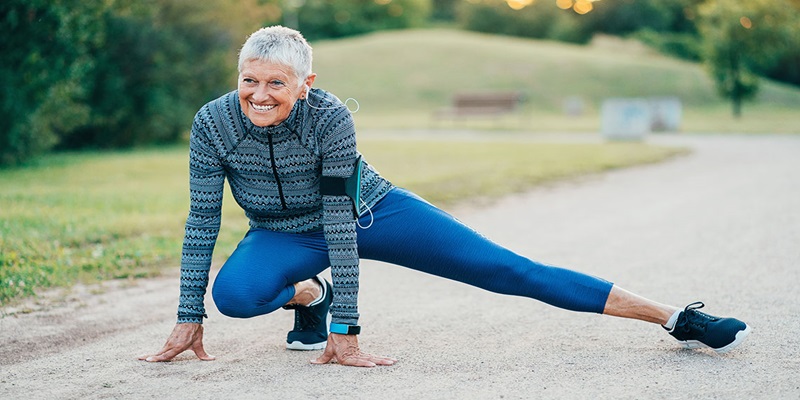Maintaining Strong Bones: Preventing Osteoporosis and Fractures in Seniors
As you age into your senior years, healthy bones matter for your overall wellness and independence. Osteoporosis and fractures become a significant issue for seniors, putting a lid on mobility and life quality. But you have the power to maintain your skeletal wellness through proactive steps. By understanding factors contributing to bone density and taking specific actions, you can reduce your risk of debilitating fractures.
What is Osteoporosis? The Silent Bone Thief
The "silent bone thief" osteoporosis is a disease that destroys bones over a period, weakening them and putting them at increased risk for fractures. Millions of seniors worldwide have osteoporosis, developing in a seeming lack of symptoms until a break occurs.
The Gradual Nature of Bone Loss
The natural aging process in the body involves loss of bone density, but osteoporosis ramps up bone loss, thinning bones and making them brittle. That heightened vulnerability puts seniors at heightened risk for fractures, even with minor spills and bumps.
Risk Factors and Symptoms
Several factors contribute to osteoporosis development, including genetics, hormonal changes, and lifestyle choices. While there are no obvious early warning signs, some indicators may include:
• Loss of height over time
• Stooped posture
• Back pain caused by fractured or collapsed vertebrae
Understanding these risk factors and potential signs is crucial for early detection and prevention.
How it Can Impact Senior Health?
The impact osteoporosis can have on a senior's life is profound. Fractures, but especially hip fractures, can hinder mobility, cause loss of independence, and predispose to complications. By realizing that osteoporosis is a quiet disease, seniors and caregivers can act early to maintain bones and prevent potentially life-altering fractures.
Nutrients for Bone Health: Building a Strong Foundation

Calcium
Calcium is the most essential building block for healthy bones. As we age, our bodies become less efficient at absorbing this beneficial mineral. To maintain bone density, older adults require 1,200 milligrams of calcium each day. Dairy foods, including milk, yogurt, and cheese, are perfect sources for those with lactose intolerance; leafy greens, fortified plant milk, and canned fish with soft bones serve as alternatives high in calcium.
Vitamin D
Vitamin D aids in your body's ability to effectively absorb calcium. Sunlight is Nature's best vitamin D source, but many older adults don't expose themselves to enough sunlight. Fatty fish, egg yolk, and foods with added vitamins can supplement your intake. Vitamin D supplements can be recommended by your doctor, especially during winter, when little sunlight is seen.
Other Bone Building Nutrients
Though calcium and Vitamin D get most of the limelight, other vitamins and minerals contribute to healthy bones. Magnesium, in foods such as nuts, seeds, and whole grains, keeps calcium at proper levels. Vitamin K, rich in leafy greens, constructs bones. Protein, too, plays a role in maintaining bone density and must be included in your meals, including lean meat, fish, or plant sources of protein.
Exercise Methods to Stop Fractures in Seniors

Exercise plays a role in maintaining healthy bones and preventing fractures in seniors. By exercising with concentrated techniques, seniors can significantly strengthen their bones, enhance balance, and strengthen their overall health.
Weight-Bearing Exercises
Weight-bearing exercises are key in driving bone development and strengthening bones. They involve working in relation to gravity in an upright position. Dancing, jogging, walking, and climbing stairs are best for seniors. For bones to become strengthened through bone development, do at least 30 minutes of weight-bearing exercise most days of the week.
Resistance Exercises
Incorporating resistance exercises into your routine can help strengthen your bones and muscles and build bone density. You can do squats, lunges, and arm curls with your body weight, lightweight dumbbells, or a resistance band. Start with 2-3 times a week and build intensity with increased strengthening.
Flexibility and Balance Exercises
Flexibility and balance can effectively reduce fall peril and fractures in seniors, a major cause of fractures in older adults. Do yoga, tai chi, or simple one-leg stands, and enjoy coordination and awareness of your body, becoming less prone to accidents.
Lifestyle Habits That Contribute To Bone Strength

Exercise for Robust Bones
Weight-bearing exercise helps keep bones strong and healthy. Jogging, dancing, or a simple walk stimulates bone development and prevents bone thinning. For bones to become strengthened through bone development, do at least 30 minutes of exercise most days of the week. Resistance training with a resistance band or free weights can strengthen bones and muscles, providing overall stability and reducing fall peril.
Fall Prevention Strategies
Creating a secure living environment is key to preventing fractures. Apparent tripping hazards such as loose rugs or cluttered walkways. Install handrails on the stairs and bathrooms for increased support. Have proper lighting in your home, particularly in hallwayways and stairways. Vision and hearing check-ups can also minimize the danger of falls by enhancing your overall awareness of your environment.
Maintaining Strong Bones: A Lifelong Commitment
Building and maintaining bone strength is a continuous process that deserves your attention for a lifetime. As life progresses, it is increasingly important to work towards bone well-being to avert osteoporosis and bone breakage.
Beginning Early, Sticking with It
Peak bone mass is reached during your late 20s and early 30s. Once past this stage, it is a matter of holding onto bone density. It is never too early to prioritize your bones, yet it is not too late to make healthy changes, either.
Diet: Building a Basis for Robust Bones
Healthy bones simply require a balanced diet rich in vitamins and minerals, including calcium and vitamin D, for strengthening bones. Dairy, leafy foods, and fortified foods are all rich in these compounds. Supplements can be considered in cases of a poor diet, but only with a doctor's approval first, of course.
Exercise: Resistance and Weight-Bearing
Daily exercise, including jogging, dancing, or simply walking, helps stimulate bone growth. Resistance training with bands or free weights continues to build bones and enhance overall steadiness.
Lifestyle Habits Can Have an Impact
Some customs can adversely impact bones. Monitor your alcohol consumption and refrain from smoking, both of which can hasten bone loss. Hydrate and keep your weight in check to lessen strain on bones and joints.
Protecting Your Skeletal Health with Aging
By prioritizing your bones, you can actually reduce your risk of osteoporosis and fractures in your later years. Exercise, a healthy intake of calcium, a healthy level of vitamin D, and a change in your lifestyle can all help your bones. Remember to have your doctor refer you to bone density tests and interventions, if any when needed. By taking proactive steps and consistently keeping your bones in harmony, your bones can be healthy and strong in your later years.





